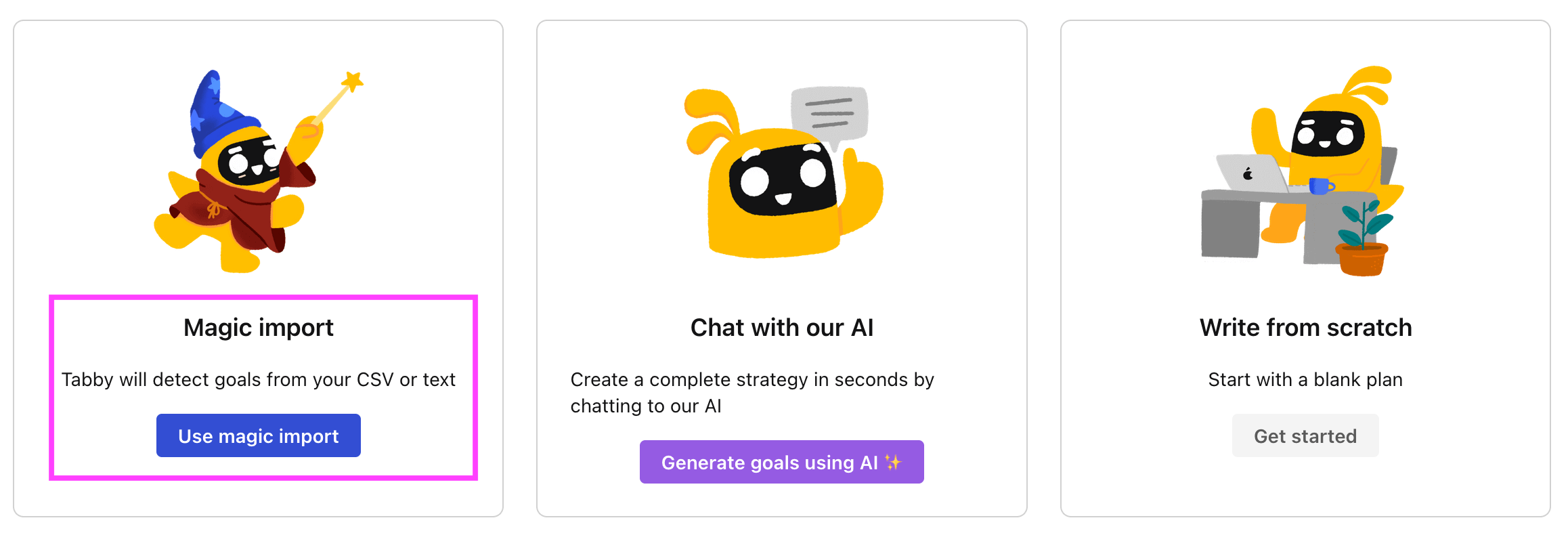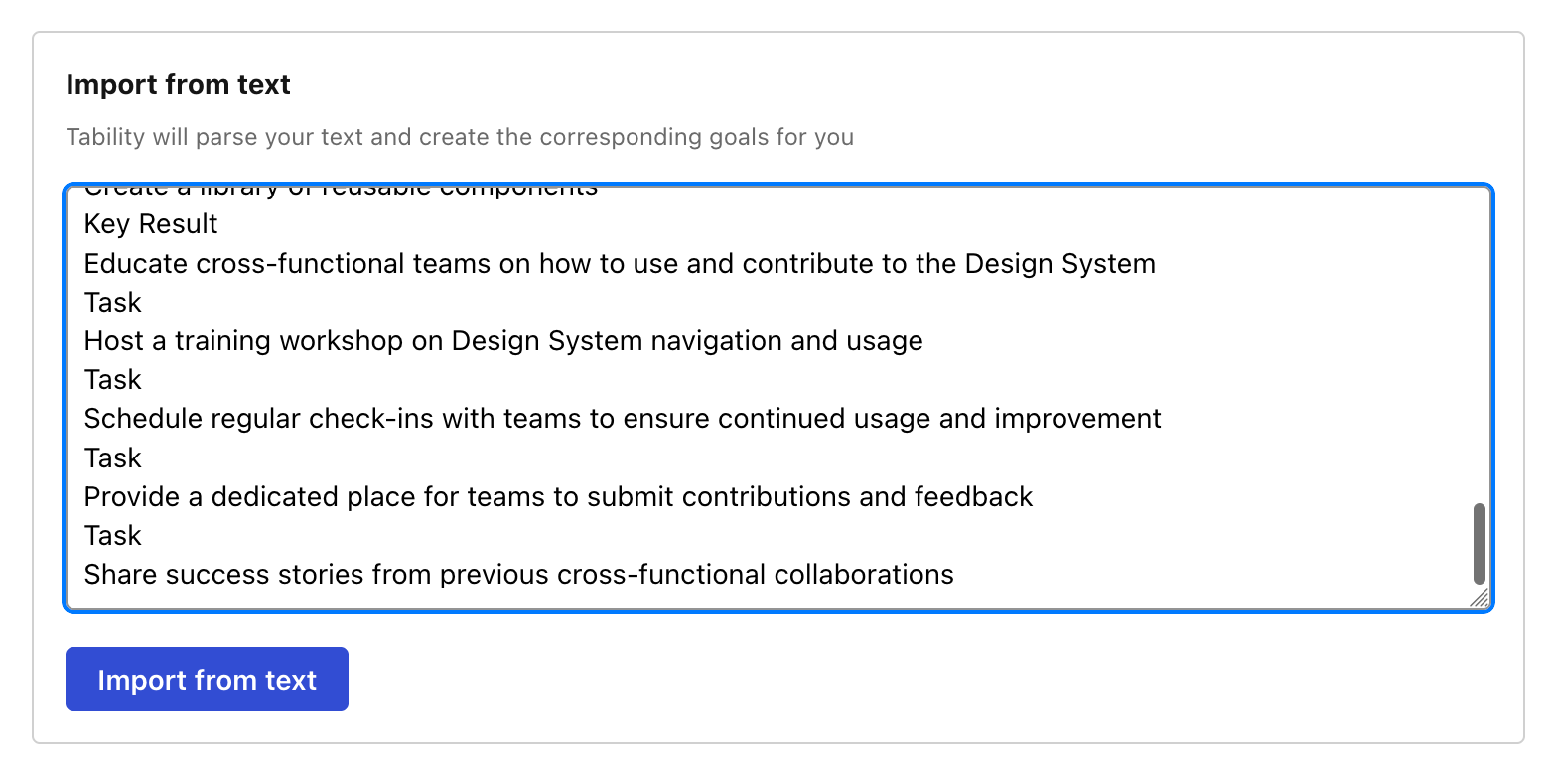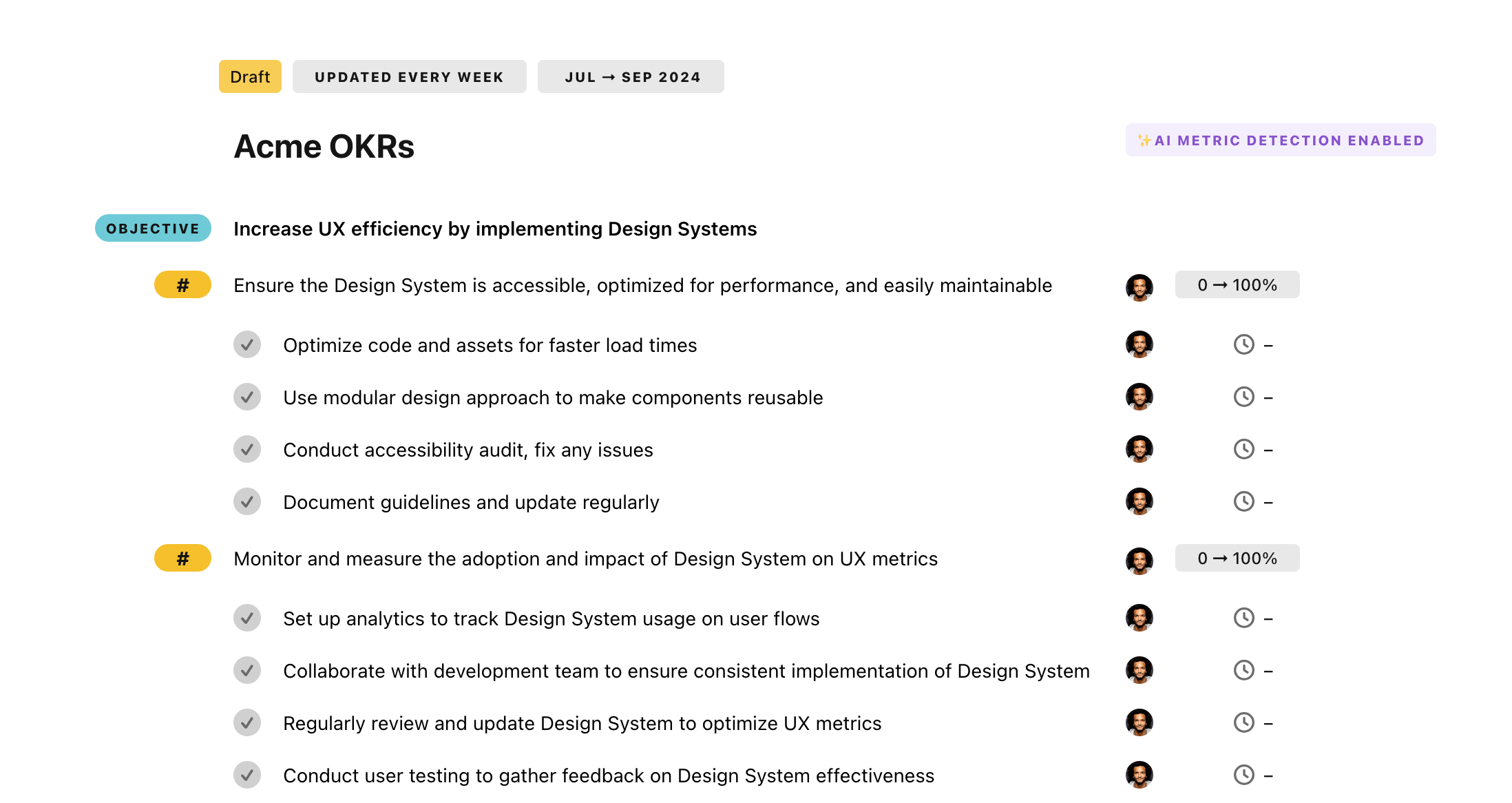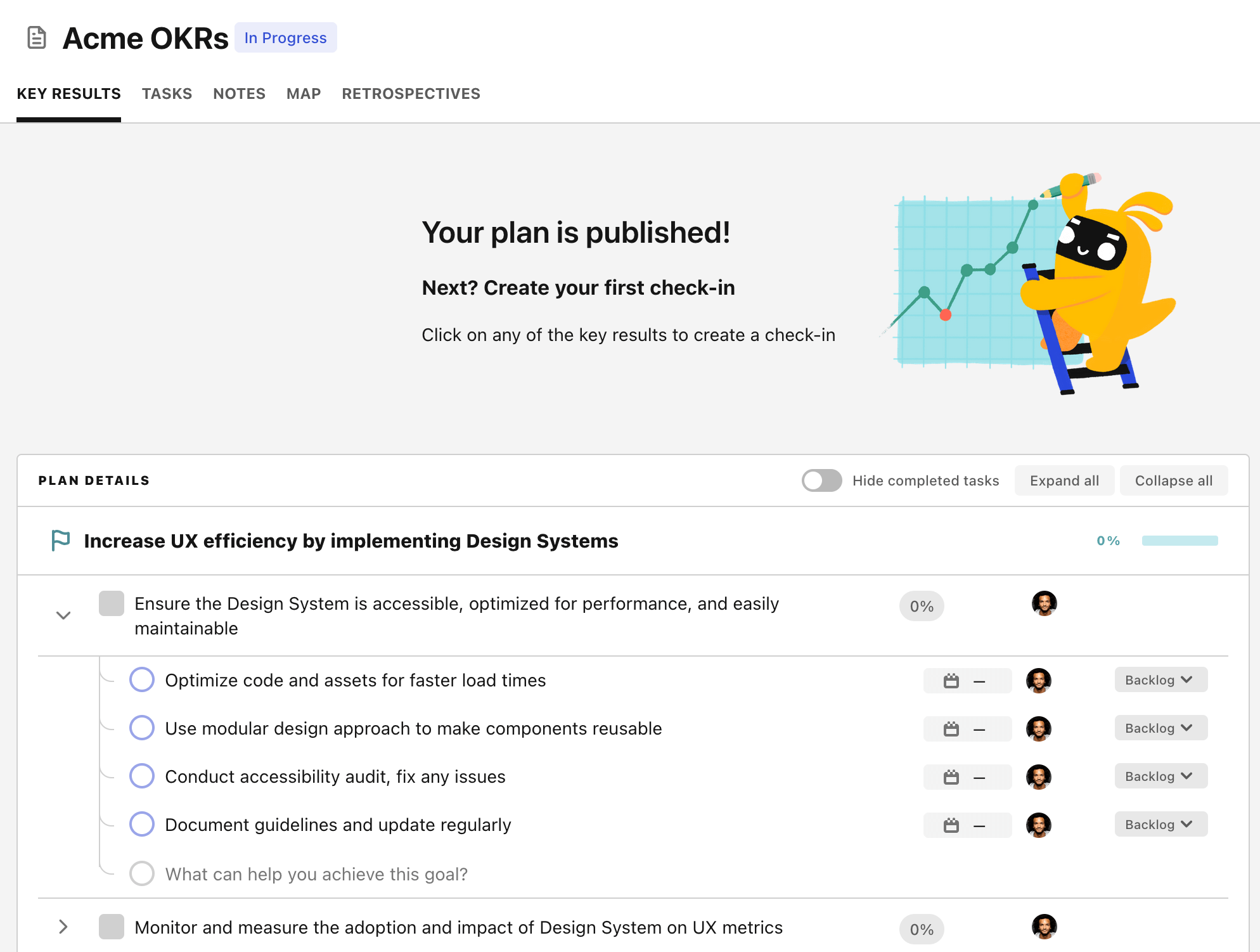OKR template to implement a comprehensive safety training completion program
Your OKR template
The second objective focuses on scheduling meetings with all department heads to address training needs by the end of Week 1. The associated initiatives are gathering relevant training materials, setting up the meeting for Week 1, and preparing an agenda that outlines training needs.
The third objective pertains to conducting reviews at Week 9 to ensure total completion of the training. This step comprises determining all employees requiring training by Week 9, scheduling review meetings to confirm completion, and compiling reports on any unfinished training.
In essence, the OKR aims to enhance workplace safety through the design of comprehensive training that allows for maximum employee involvement. It's a step-by-step process, established over several weeks, that results in a well-structured and comprehensive safety training completion program.
ObjectiveImplement a comprehensive safety training completion program
KRDevelop and distribute a new set of safety materials by Week 6
Dedicate Week 5 to fully distribute safety materials
Coordinate mass production of the materials by Week 4
Finalize the contents for the new safety materials
KRMeet with all department heads to discuss training needs by end of Week 1
Gather relevant training materials for discussion
Schedule meeting with department heads for Week 1
Prepare agenda highlighting training needs
KRConduct reviews at Week 9 to ensure 100% training completion
Determine all employees requiring training by Week 9
Schedule review meetings to confirm completion
Compile reports on any unfinished training
How to edit and track OKRs with Tability
You'll probably want to edit the examples in this post, and Tability is the perfect tool for it.
Tability is an AI-powered platform that helps teams set better goals, monitor execution, and get help to achieve their objectives faster.
With Tability you can:
- Use AI to draft a complete set of OKRs in seconds
- Connect your OKRs and team goals to your project
- Automate reporting with integrations and built-in dashboard
Instead of having to copy the content of the OKR examples in a doc or spreadsheet, you can use Tability’s magic importer to start using any of the examples in this page.
The import process can be done in seconds, allowing you to edit OKRs directly in a platform that knows how to manage and track goals.
Step 1. Sign up for a free Tability account
Go tohttps://tability.app/signup and create your account (it's free!)
Step 2. Create a plan
Follow the steps after your onboarding to create your first plan, you should get to a page that looks like the picture below.

Step 3. Use the magic importer
Click on Use magic import to open up the Magic Import modal.
Now, go back to the OKR examples, and click on Copy on the example that you’d like to use.

Paste the content in the text import section. Don’t worry about the formatting, Tability’s AI will be able to parse it!

Now, just click on Import from text and let the magic happen.

Once your example is in the plan editor, you will be able to:
- Edit the objectives, key results, and tasks
- Click on the target 0 → 100% to set better target
- Use the tips and the AI to refine your goals
Step 4. Publish your plan
Once you’re done editing, you can publish your plan to switch to the goal-tracking mode.

From there you will have access to all the features that will help you and your team save hours with OKR reporting.
- 10+ built-in dashboards to visualise progress on your goals
- Weekly reminders, data connectors, and smart notifications
- 9 views to map OKRs to strategic projects
- Strategy map to align teams at scale